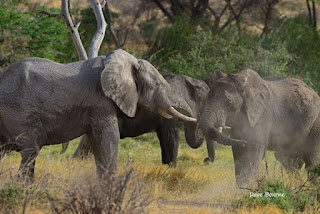The Hunter’s Hartebeest is a medium-sized antelope, tan to rufous-tawny in colour with slightly lighter under parts, predominantly white inner ears and a white tail which extends down to the hocks.
It has very sharp, lyrate horns which lack a basal pedicle and are ridged along three quarters of their length. As hirola age their coat darkens towards a slate grey and the number of ridges along their horns increases.
They are critically endangered. When I do slideshow presentations in the schools on our trips abroad the image of the Hunter's Hartebeest never fails to get a laugh from the kids.






















































